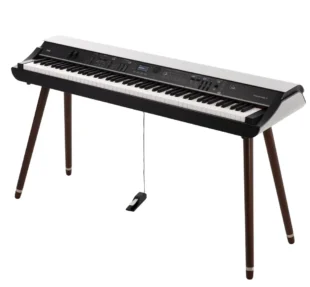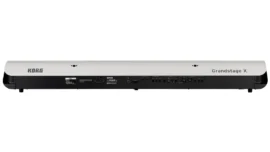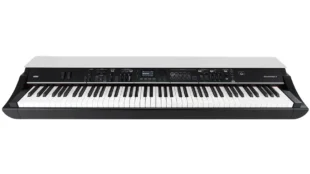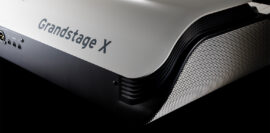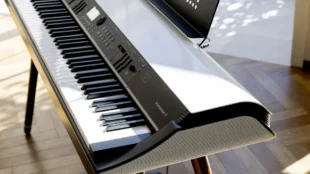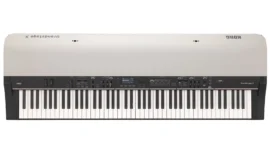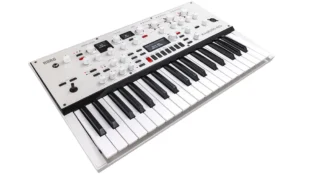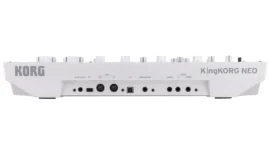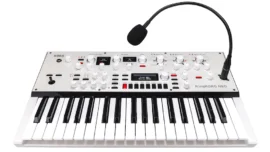KORG Introduces wavestate, opsix + modwave Modules
Korg releases desktop versions of three of its most popular synths: wavestate, opsix and modwave.
2024 NAMM Show: In yet another big gear announcement from Korg, the manufacturer has revealed three module versions of its most popular synthesizers: wavestate, opsix and modwave. If you liked the look of these instruments but you’ve no need for a keyboard or fancy integrating them into a rackmount set-up, it is your lucky day.
Each of the three synths now supports MIDI 2.0 Property Exchange, a feature that exchanges tones, programs, and other information between devices using MIDI messages, and their factory sounds have been redesigned to respond to polyphonic aftertouch. This means they’ll pair well with Korg’s Keystage, the brand’s first MIDI 2.0-compatible keyboard controller.
The desktop versions of the Wavestate, Modwave and Opsix are designed for both desktop and rackmount use, measuring 4U in height and 19″ in width, and the rear jack panel is recessed to allow easy access to cables even with gear mounted directly above. The synth’s brackets offer a choice of panel angles for desktop use: flatter for performing standing up, or more upright for working while seated in your studio.
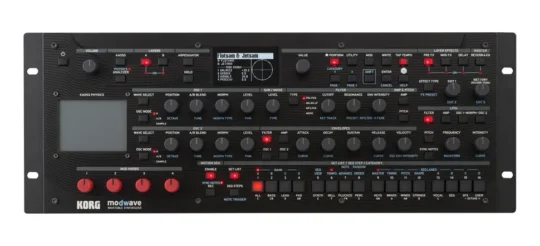
The Korg modwave module offers of the features of the modwave mkII in a compact 19-inch desktop/rackmount package.
The Modwave is a modern take on Korg’s cult classic DW-8000 synthesizer that transforms the original into a “modern monster synth” equipped with powerful wavetable oscillators, flexible modulation capabilities and 60-voice polyphony. Korg says that its responded to user requests in updating Modwave’s LFOs with options for free-running, delayed start and retriggering, while adding a pre/post switch for reverb sends.
Find out more on the Korg website.
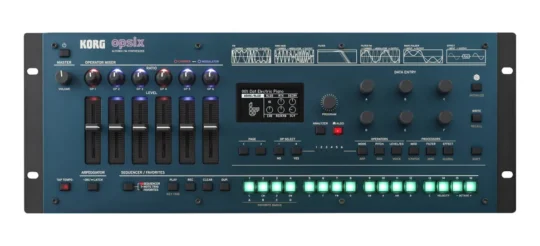
The module version of the Opsix offers all of the features of Korg’s Opsix mkII, also announced today. This includes an expanded 64-voice polyphony and the addition of new “sound components, waveforms, filters, shaping possibilities, effects, LFOs, envelopes, modulations and more”. Opsix is an ‘Altered FM’ synth that augments classic DX7-style 6-operator FM synthesis with subtractive, analogue modelling, waveshaping and additive synthesis, along with analogue-style filters that emulate the MS-20 and PolySix. The 19″ rack-mountable enclosure has the same controls as the keyed models, yet is easily transportable and fits neatly into any studio or desktop production system.
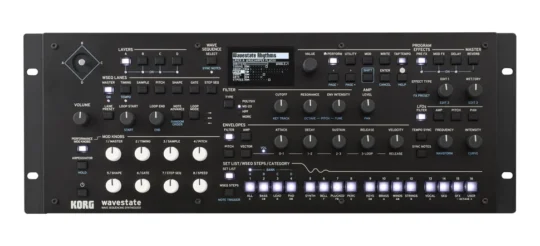
The Korg wavestate module offers all of the features of the wavestate mkII in a compact 19-inch desktop/rackmount package.
Korg’s Wavestate is a 21st-century reimagining of the Wavestation, a digital wave sequencing synth made by the company in the ’90s. Wavestate mkII was released in June last year, expanding the original’s polyphony from 64 stereo voices to 96 and adding a variety of newly designed Wave Sequences and Programs, along with expanded internal storage and redesigned companion software, Wavestate Editor/Librarian. The desktop version’s polyphony has been boosted up to 120 voices.
Here’s what they say about the wavestate:
“In 2020, the acclaimed wavestate brought KORG’s Wave Sequencing to the next level. Featuring the radically re-imagined Wave Sequencing 2.0, the wavestate delivers astonishing, ever-changing sounds with extensive hands-on control. Far from a nostalgic reissue, the wavestate was designed from the ground up for a new generation of musicians, producers, and composers, taking cues from sources as diverse as modular synths, groove boxes, and algorithmic composition.”
Find out more on the Korg website.
